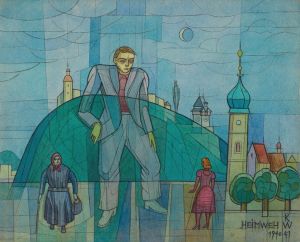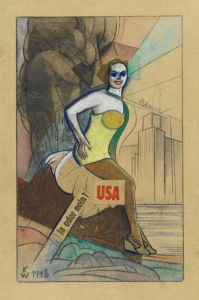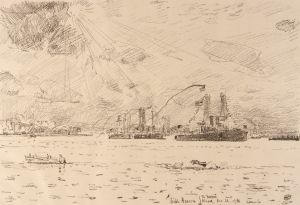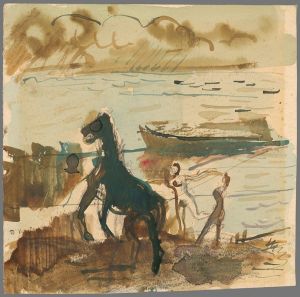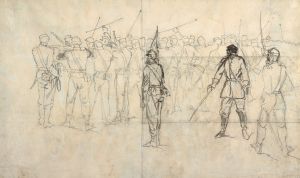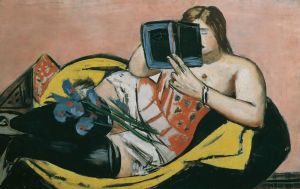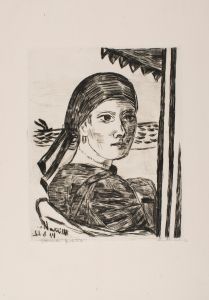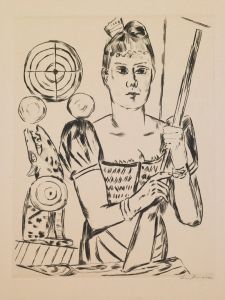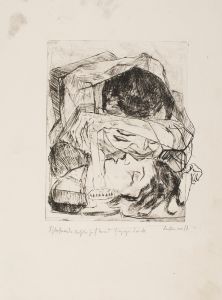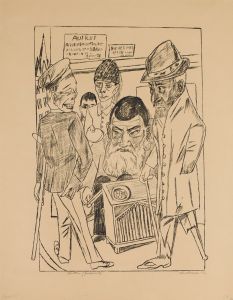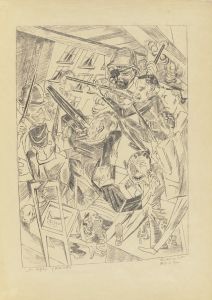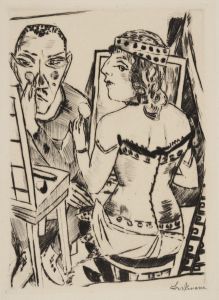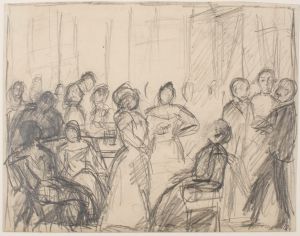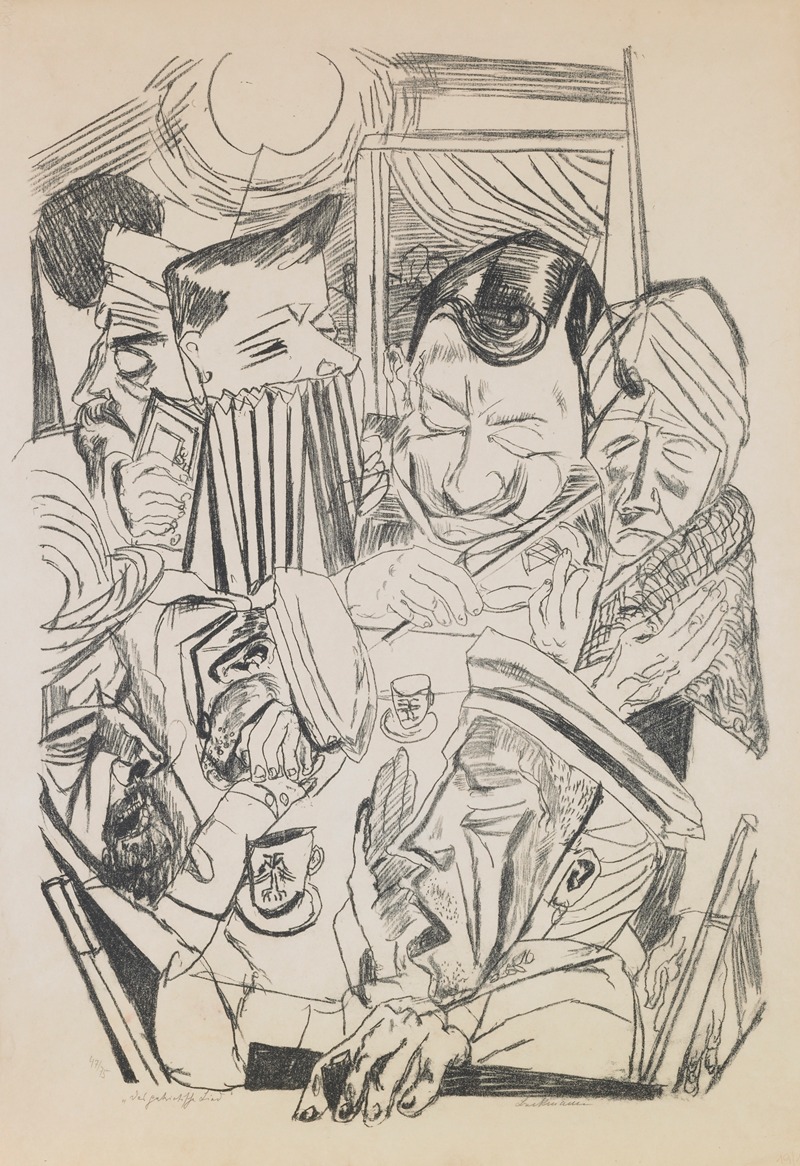
plate 9; The Patriotic Song
A hand-painted replica of Max Beckmann’s masterpiece plate 9; The Patriotic Song, meticulously crafted by professional artists to capture the true essence of the original. Each piece is created with museum-quality canvas and rare mineral pigments, carefully painted by experienced artists with delicate brushstrokes and rich, layered colors to perfectly recreate the texture of the original artwork. Unlike machine-printed reproductions, this hand-painted version brings the painting to life, infused with the artist’s emotions and skill in every stroke. Whether for personal collection or home decoration, it instantly elevates the artistic atmosphere of any space.
Max Beckmann's "Plate 9; The Patriotic Song" is a notable work within the context of early 20th-century art, reflecting the tumultuous socio-political climate of its time. Beckmann, a German painter and printmaker, is often associated with the New Objectivity movement, which emerged in response to the emotional intensity of Expressionism. His works frequently explore themes of human suffering, societal upheaval, and the absurdity of war, often through a lens of stark realism and symbolic complexity.
"The Patriotic Song" is part of Beckmann's larger series of prints known as "Hell" (Die Hölle), created in 1919. This series comprises ten lithographs that capture the chaotic and often grotesque nature of post-World War I Germany. The series is a critical commentary on the social and political instability that plagued the Weimar Republic, marked by economic hardship, political extremism, and a general sense of disillusionment following the war.
In "The Patriotic Song," Beckmann employs his characteristic style of bold lines and dramatic contrasts to depict a scene that is both satirical and unsettling. The image portrays a group of figures engaged in a fervent, almost frenzied, rendition of a patriotic song. The exaggerated expressions and distorted forms of the figures suggest a sense of irony and critique, highlighting the hollow nature of nationalism and the absurdity of blind patriotism in the face of societal collapse.
Beckmann's use of lithography in this series is significant, as the medium allowed for the production of multiple copies, thereby reaching a wider audience. The choice of black and white further emphasizes the stark, uncompromising nature of his critique. The "Hell" series, including "The Patriotic Song," is often seen as a reflection of Beckmann's personal experiences during the war and his disillusionment with the nationalistic fervor that had contributed to the conflict.
The historical context of "The Patriotic Song" is crucial to understanding its impact and significance. The aftermath of World War I left Germany in a state of turmoil, with widespread economic distress and political instability. The Treaty of Versailles, which ended the war, imposed harsh penalties on Germany, leading to a sense of humiliation and resentment among its citizens. In this environment, Beckmann's work served as a powerful critique of the societal forces that had led to such devastation.
Max Beckmann's "Plate 9; The Patriotic Song" remains an important work for its incisive commentary on the human condition and the socio-political dynamics of its time. Through his masterful use of lithography and his unflinching portrayal of the absurdities of nationalism, Beckmann offers a timeless reflection on the dangers of blind patriotism and the complexities of post-war society. The work continues to be studied and appreciated for its artistic merit and its profound engagement with the historical realities of early 20th-century Europe.





